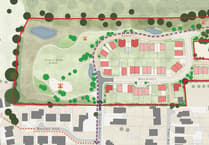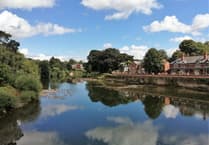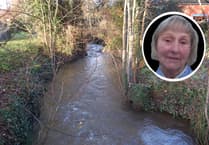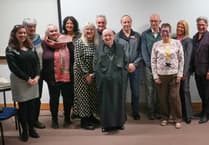WITH Welsh Water facing charges for polluting the Wye and roughly a quarter to a third of phosphate pollution coming from human sewage, isn’t it time for an alternative solution?
Herefordshire Council has a target for 27,000 new homes to be built over the next 20 years, putting more stress on mains sewers and rural drainage systems.
The preferred solution for human waste is to connect to the mains sewers but this is the only solution which connects directly to the river.
Not many rural homes have access to mains sewers, so the alternatives are package treatment plants or septic tanks with each utilising a large drainage field to spread the liquids directly into the ground.
With the River Wye now classified as ‘Unfavourable – Declining’ these solutions are now being subject to more rigorous, higher standards of efficacy.
Currently the best package treatment plants discharge phosphates into the ground at typical levels whereas the limit for the River Wye differs making it much harder for new dwellings in rural communities to comply.
However, Herefordshire planners have recently approved a novel and highly effective solution to this problem in a new dwelling on Howle Hill.
This solution has not been tried before, so the planning authority was particularly rigorous in their assessment of it and requiring detailed research reports.
The applicant, Andrew De La Haye was determination to succeed and convinced the planning department that this scheme would work.
He said: “We are very keen to get the river clean and avoid pollution to the point of commissioning a system, which not only avoids all waste but sees waste as a resource to enhance the productivity in their permaculture garden where they grow their own protein, vegetables and fruits.”
The system consists of a waterless toilet which sits inside the house for convenience but separates liquids from solids.
The liquids are diluted and used for fertilising fruit trees and shrubs and the solids are composted for 12 months minimum to eliminate pathogens and the resulting compost is just like any other compost and is used on the trees and shrubs to grow healthy plants.
All of the waters coming from the house, like basins, sinks, shower and washing machine will be fed into a Wetland Ecosystem Treatment System, designed and built by Biologic Design Ltd.
The system is designed to have no outflow because the evaporation and transpiration of the plants and soil has greater capacity than the inputs of water from the house plus rainfall.
There will be many hundreds of willows which will be sufficient to absorb all of the potentially harmful nutrients. All in all there will be no pollution coming from the system, only lovely crops.
Mr De La Haye added: “There is a saying in permaculture that ‘the problem is a solution’. In this case the problem is the waste waters and human toilet waste, whilst the solution is the application of these to the productivity of the garden.
“So hopefully this can now stand as an example of what is possible to turn a problem into an opportunity for other developments.”





Comments
This article has no comments yet. Be the first to leave a comment.